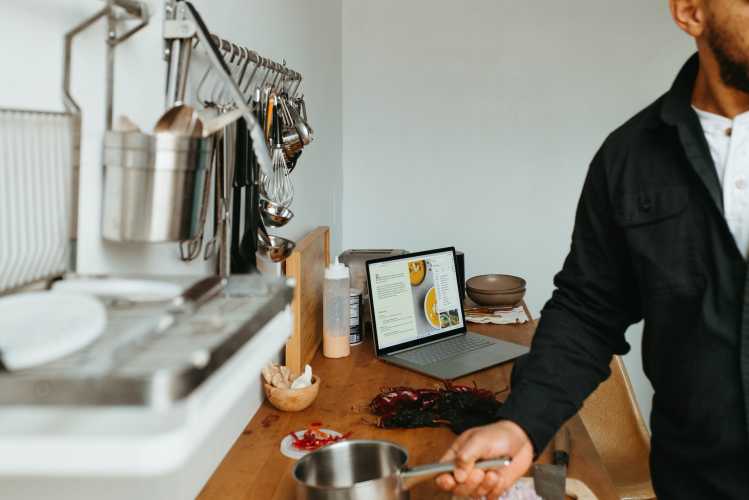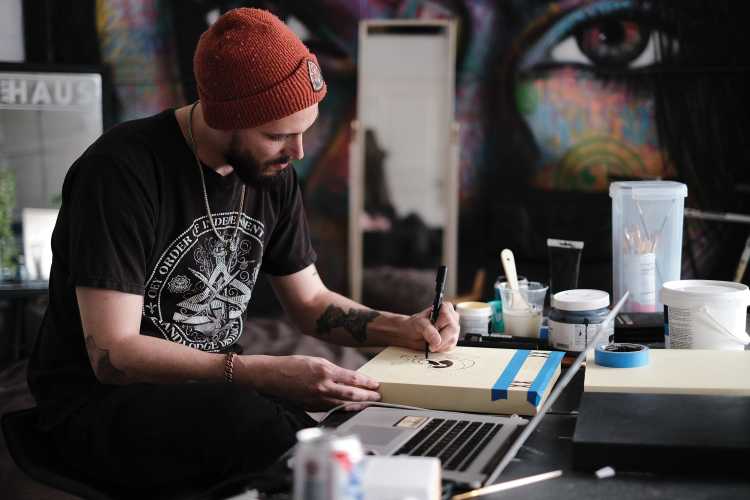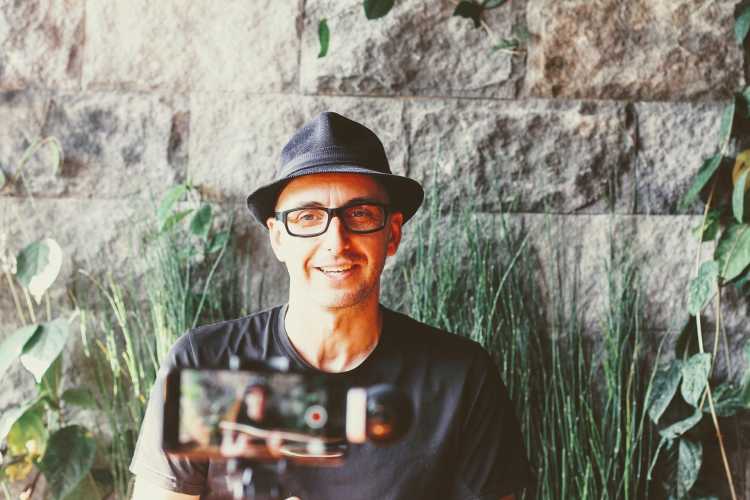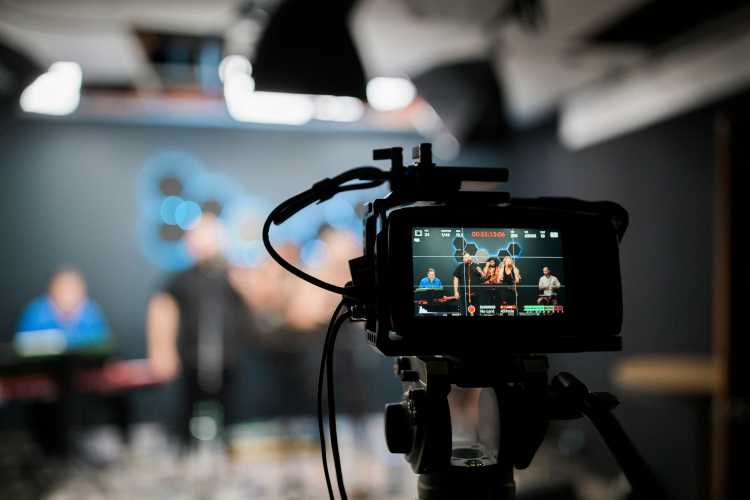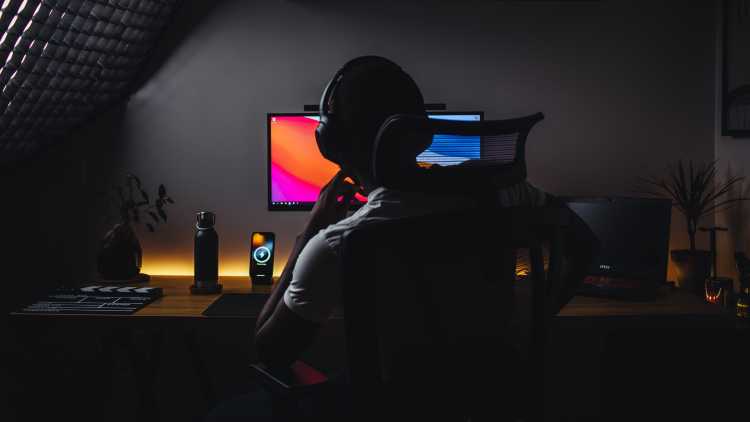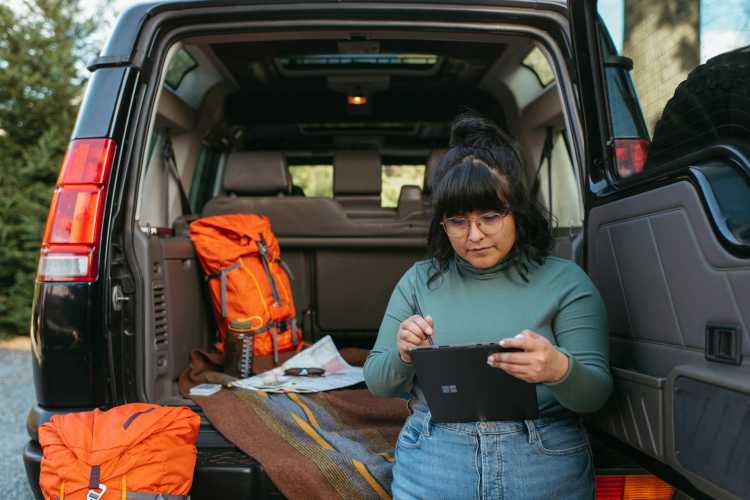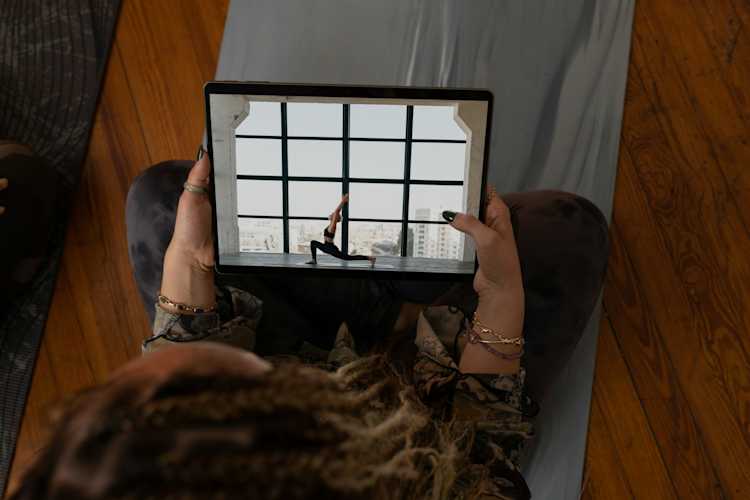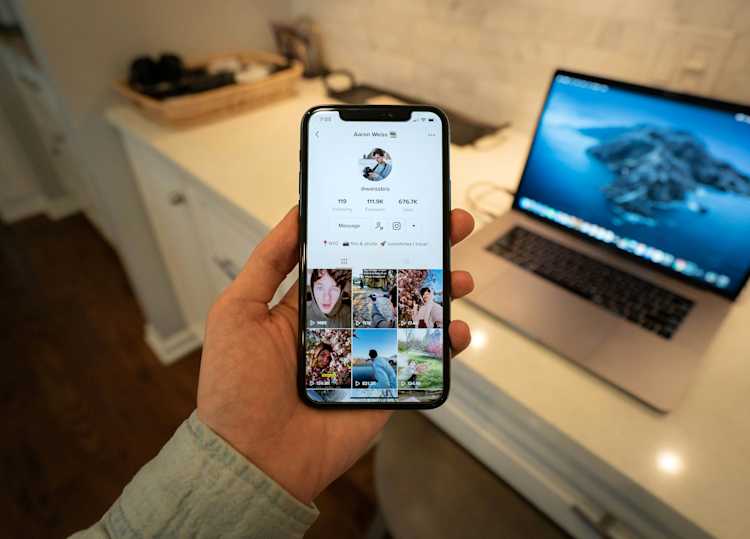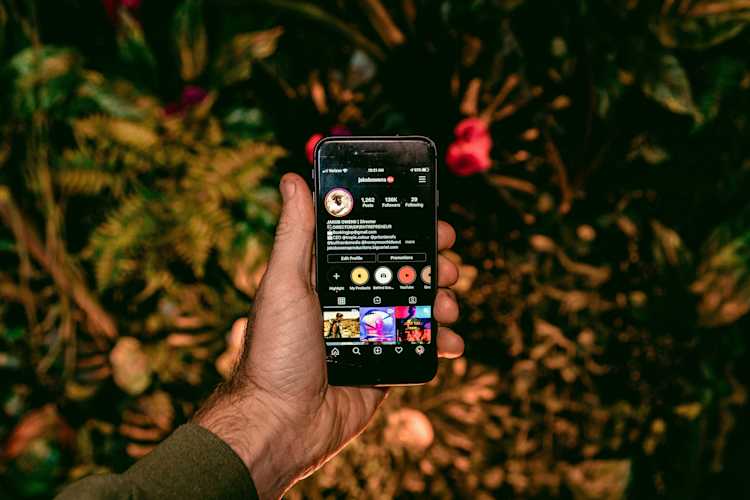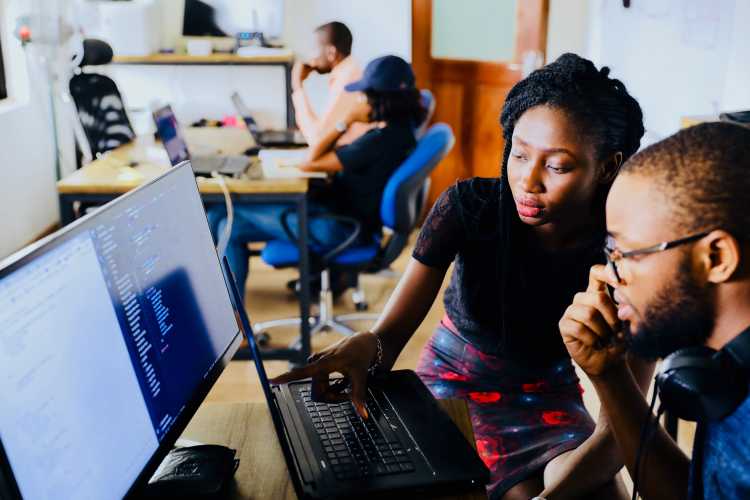Creators & Entrepreneurs
What Is a Content Creator? (And How to Become One)
If you're ready to create content and put it out into the world, here's what you must know.
Author
Mighty Team
Last Updated
February 6, 2025

Content creators are a growing demographic, with 400 million people calling themselves content creators in 2024. They sing, dance, game, chat, write, record, and edit the content that we consume every day.
In this article, we’ll introduce you to the idea of what a content creator is and give you a road map to become one.
What is a content creator?
A content creator is someone who writes, records, or produces media that humans consume and engage with on the web and social media. We could add an extra layer to this definition and say: a content creator is someone whose goal is to create the best possible content they can–we’ll get into why this is important below.

Obviously, the role of content creator is always changing. New platforms, new mediums, even the question of AI content–being a content creator is shaped by technological revolutions of every kind. And with each new invention, the role of content creator evolves but hasn’t gone away.
In fact, the creator economy is only growing. Humans still love content. And with 4.9 billion people worldwide on social media, it’s not likely to change.
And content creators aren’t limited to social media. Billions of people each day engage with great content on websites, in online communities or online courses, on online forums, or via newsletters in their inboxes.
Content has become as ubiquitous as the air we breathe. And with Hootsuite reporting that the average person spending 2 hours and 28 minutes on social media every day, the trend is increasing.
Some important statistics about content creators
Goldman Sachs predicts the creator economy will be a $500 billion market by 2027.
30% of Gen Z in the US and UK want to be a YouTuber/Vlogger when they grow up
36% of creators spend 1-5 hours/week on content (Linktr.ee).
59% of beginner creators haven't monetized yet (Linktr.ee).
1 in 3 creators produce only 1 type of content (Linktr.ee).
Only 12% of full-time creators make more than $50,000 (Linktr.ee).
46% of full-time creators make less than $1,000 (Linktr.ee).
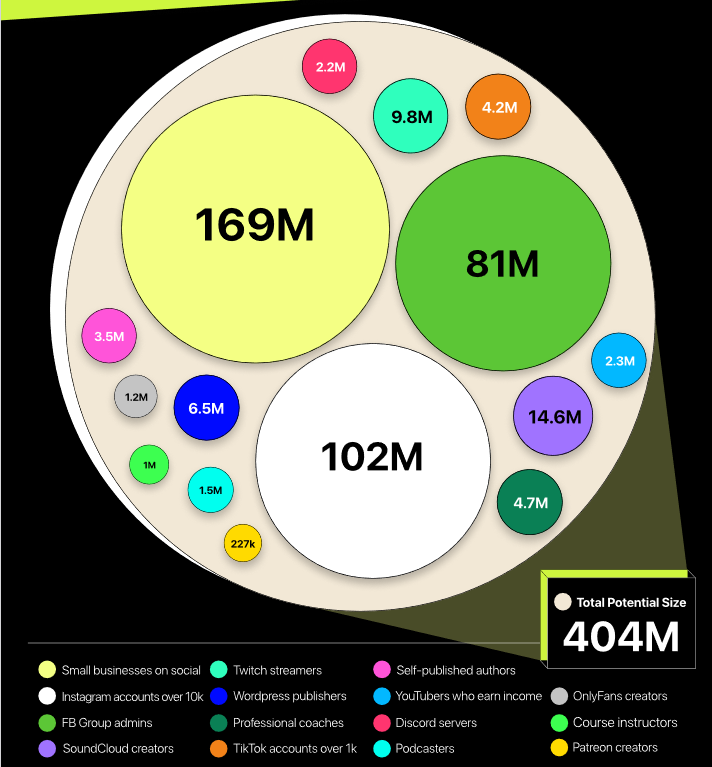
What a content creator is (maybe) not
There’s a tricky line when we’re defining content creator.
Obviously, we’re not the gatekeepers here. But it’s worth saying that for some businesses and individuals, content is just a means to an end.
Individuals know that creating content can give you fame and recognition–not to mention the opportunity for recurring income streams, Brands know that the attention content generates can be a huge boost to their brand and bottom line.
For both of these, content becomes the intermediary. It’s the thing you have to do to get the thing you really want–fame, customers, revenue, etc.
And it’s tempting to shortcut the process. If content is a means to an end, you can hire it out, or automate it, or use ChatGPT to create endless reams of posts that can be automated…
A quick scan of popular Facebook ads shows the promise of all the benefits of great content without the work.
“Let me show you how I used AI to write a book that earns me $20k/mo”
“Here’s how AI LinkedIn content brings us 50 clients a month.”
“This secret hack grows your Instagram following to 1 million overnight.”
Do these approaches work? Maybe. (We should ask why someone needs to advertise on Facebook if they have a million-dollar pipeline already.)
Are these content creators? You can decide. But it’s worth saying that the people who try to shortcut the process don’t often seem to get the results.
Because good content is hard to fake.
The top content creators don’t seem to be using “hacks”. They’re still coming up with ideas and creating things people want to watch, view, or read.
What do top content creators have in common?
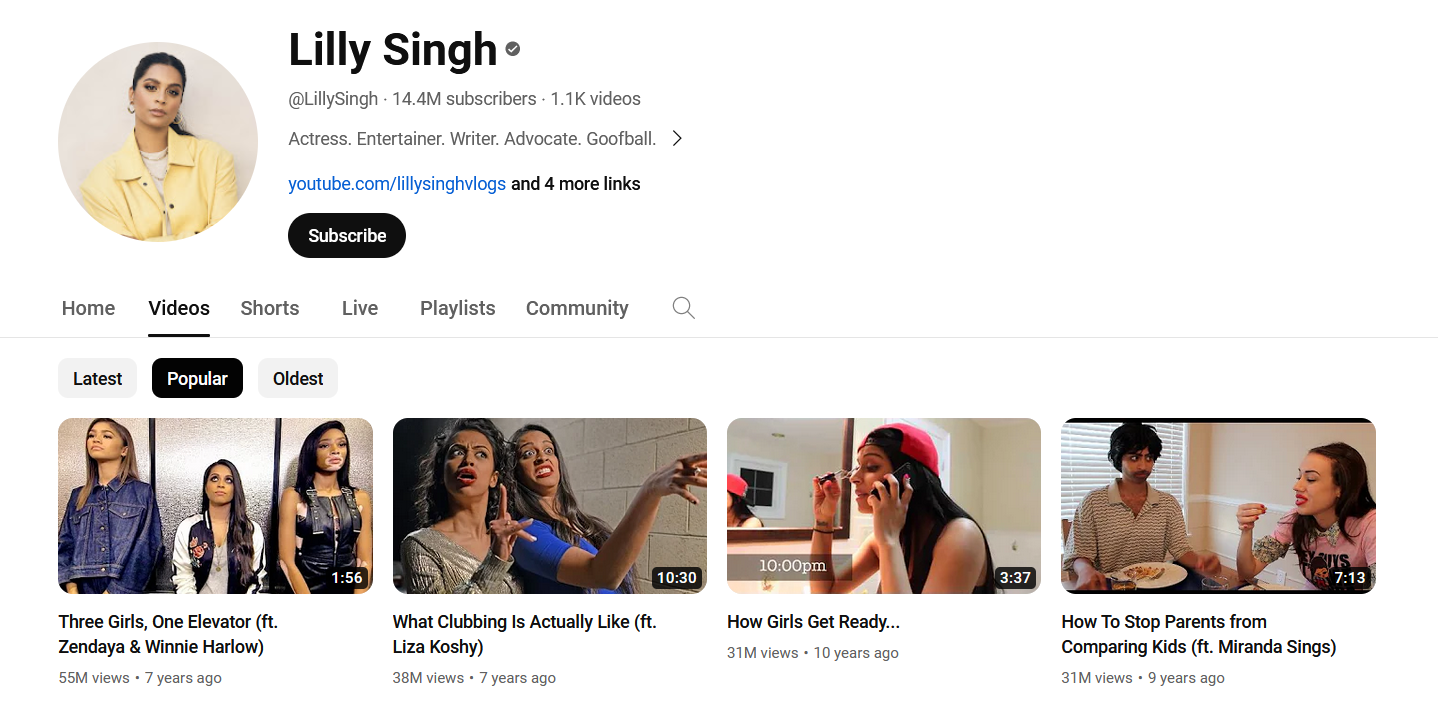
People like Alex Hormozi, Lilly Singh, Jimmy Donaldson (AKA “Mr. Beast”), or Rosanna Pansino did one thing really well–they worked hard to create content that’s extremely helpful, fascinating, hilarious, or educational.
Yes, they make money from it.
But they don’t use content as a means to an end. Content isn’t just a shortcut to get to what they really want. (Or if it is, they’re good at hiding it.)
Mr. Beast has famously reported putting millions into producing videos, including giving millions of dollars away. That’s pretty serious dedication to good content!

Here’s the simple hack great content creators use: they make it worth your time!
Humans seem to have a built-in BS meter.
We know when content is good and worth engaging with. We know when it’s real and when we’re being sold.
The line for what good content is is always changing. The stuff that worked a year ago might be passé and overdone this year. But the thing that never changes is that good content requires engagement. To be seen. To be shared.
It answers our questions. It makes us laugh. It makes us cry.
Never forget that at the other end of your content is a human being scrolling through a phone deciding if it’s worth their time. So make it worth their time.
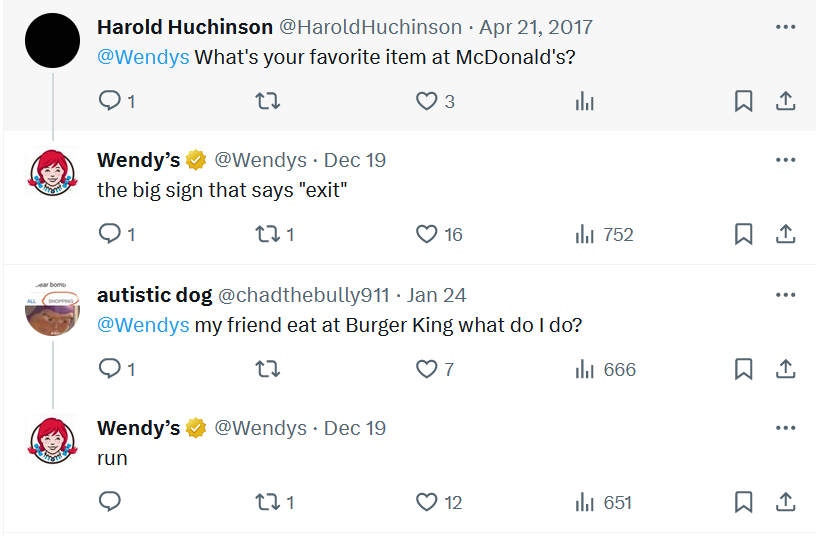
That goes for branded content too. If you’re filling up your brand’s websites and social media channels with bland garbage that’s not worth reading, don’t be surprised if… nobody reads it.
Good content takes work and intelligence. It takes good ideas. It even takes thinking.

What about AI content?
What about creating with AI? Does that make you a content creator? A recent Ipsos poll found that 43% of people believe AI-generated writing can be as good as something written by a human–so it’s already a given that AI will become a part of some people’s content creation process.
But here’s a really simple test to determine if your AI content passes the muster.
The question is not, Are you using AI to create content? The question is, are you using AI to shortcut the process? Are you trying to get the results of great content without having to put in the work?
How's that going for you?
Using AI tools to help you create the best content you possibly can will probably turn out fine.
Using AI tools to skip creating content in order to get the thing you actually want from content probably won’t.
And there’s no denying that AI tools have sped up a lot of the more tedious parts of content creation.
Why would you subtitle your video manually when an AI tool can do it?
Doesn’t it make sense to ask Chat GPT to summarize something quickly or should you read it?
Can an AI grammar tool help you write better?
Ultimately, integrating AI into your process is a personal decision. But never forget that it’s about creating great content.
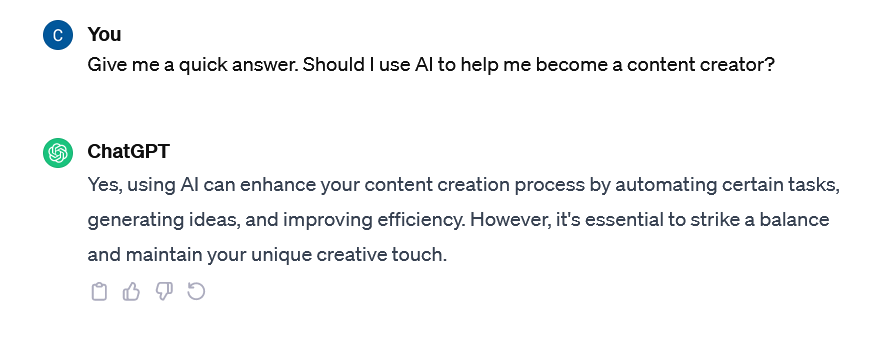
What do we do at Mighty?
This is a bit meta, but this article is a piece of created content. So what do we do at Mighty? Do we use AI?
No. We aren’t using AI for actual writing.
Why not? Wouldn’t AI speed up content production?
Answer: Of course it would. And we do use AI to help with researching and outlining sometimes.
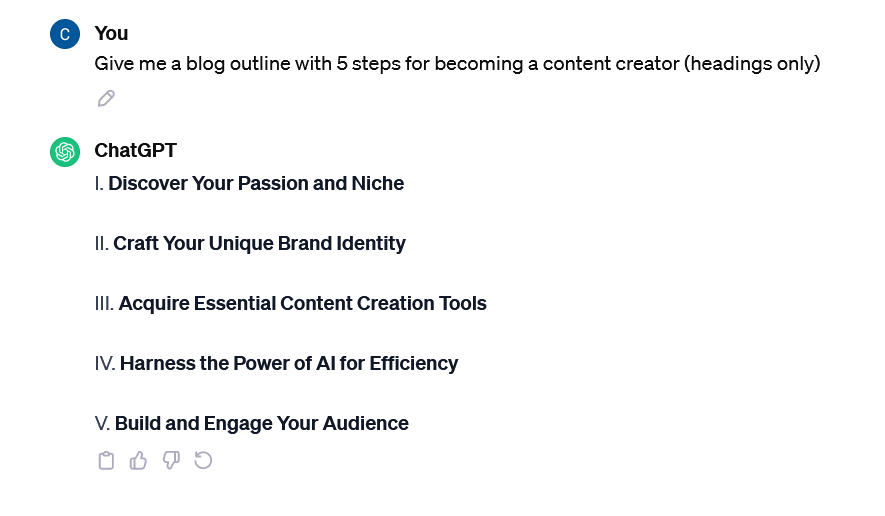
But by focusing on going deep on ideas–ideas that are unique to us and that nobody else has, we hope we’re creating content that actually helps people. We hope our content stands out, and that’s worth spending some effort on.
And we host thousands of communities of people that pour their heart and soul into their content. Each Mighty Network does have some AI tools to help with creating great content: things like question generators, text improvement tools, and auto course outlines, but we’ve created these in an effort to boost human creativity, not replace it.

How to become a content creator?
1. Gather your ideas
Becoming a content creator probably starts with your ideas. There’s someone you want to talk about or see, something you think others would be interested in. And you’re the right person to create it.
There’s no one way to start the process. Some content creators research meticulously, and some just dive in and start.
But here are a few suggestions:
Pick a niche that’s narrow enough to focus your content and broad enough to give you flexibility.
See if there are existing creators in that niche. Ideally, there will be some—that shows there’s a demand for it–but not so much saturation that you can’t imagine what else you’d say.
Sketch out a draft content calendar, identifying a month or two or six worth of content you could see creating. In a community design, we call this a Year in the Life.
Interview some potential audience members that you know–see what they’d be interested in for content.
You can always evolve and grow as you create. It would be surprising if you didn’t. So keep that in mind too.

2. Be authentic
We’ve all heard the word “authenticity” thrown around so much it barely means anything anymore. So how does authenticity factor into content creation?
The answer to being authentic is not just to throw every thought in your head onto social media. You need to be selective about how you portray authenticity.
But be careful about fake authenticity too. Remember the crying CEO? He posted a picture of himself in tears after firing employees–and yeah, that backfired.
So how do you become an authentic content creator?
Maybe a better word for authentic is “real”. Remember, humans have a built-in B-S- meter for content.
So if you start from things that are REAL- the things you love, the things you hate, the things that fascinate you, the things that make you unique, you’re probably in a good place.
Do you know the story of Martinus Evans? He started the Instagram account 300poundsandrunning to share his journey as a “back of the pack” runner. He didn’t look like other fitness influencers–but that’s what made his story so compelling.

And to date, this journey has led to 100k Instagram followers and a community of 20,000+ people who aren’t afraid to be SlowAF too!
This is authenticity. Not some engineered moment of feeling or emotions… but the ability to create content that connects on a level of real.
But be true to yourself. But remember, the quest for “authenticity” shouldn’t let you be something you’re not. If you don’t want to cry on camera, dance on TikTok, or share deeply personal stories… please don’t! Your best authenticity will be rooted in who you are, but don’t forget to keep parts of yourself for yourself–if you want.
3. Create good stuff
In the age of AI content and scheduling apps, it’s easy to fall into the trap that more content=success. And while it’s true that some platforms reward more content (we’ll talk about the content treadmill below), there’s no denying that every platform rewards good content.
Social media algorithms are fickle, but there’s not a single platform that doesn’t feed off of engagement in some way–how many people watch, like, and share your content. That means the best stuff usually rises to the top–because you can’t fake engagement. Either people watch/read/listen to your stuff, or they don’t.
And even if you’re creating in a space with no algorithms like a website or a community, good content still stands out.
Do you know the YouTuber Mark Rober? A former NASA engineer who started making videos about science, Rober has 29 million subscribers on YouTube. And in 11 years of his channel, he’s created 129 videos. That’s less than 1 video per month.
How has Mark Rober reached 29 million subs without posting three times a week?

Easy. The content is GOOD!
If you want to be a content creator, focus on creating the best content you possibly can in the medium you’re best at.
4. Create in the right place
Obviously, there are a lot of platforms to choose from as you start the journey of being a content creator. Each comes with its own advantages and disadvantages.
There are a few simple questions to help you choose where to create–and hint, you don’t need to be on every platform to be a successful creator.
What do you like to create? Do you like making videos? Then obviously, a platform like YouTube, TikTok, or Facebook/LinkedIn might be best. Do you like to write? Maybe you’ll create on LinkedIn or Twitter, or start your own blog.
Where are people like you hanging out? Sometimes, creators choose their platforms based on where people hang out. For example, if you like to talk about business growth or career advice, chances are LinkedIn is the right place to start–it’s literally the professional platform.
Where can you scale impact? It’s also important to understand how platforms grow followings. For example, YouTube has a search engine built in–and it’s owned by Google. Creating on YouTube means people can find you for years after in a way that they just can’t on other platforms. It’s the same with a blog or website–if it’s built with SEO in mind, you can get search engine traffic on autopilot.
In a community, we see impact scaled because of the network effect–which means the platform becomes more valuable with each user that joins AND user-generated content. This means your content creation isn’t just about you, a community comes together and creates too. Your content creates conversation–AKA others’ content–and scales.
We talk about something we call the content treadmill–where you get stuck in a place where you need to keep creating but don’t feel inspired or energized. But by choosing platforms that let you scale impact, you can get off this content treadmill.
Where can you monetize?
We’ll cover this below. But creating in a space that works for monetization will make life easier when it comes time to earn from your content.
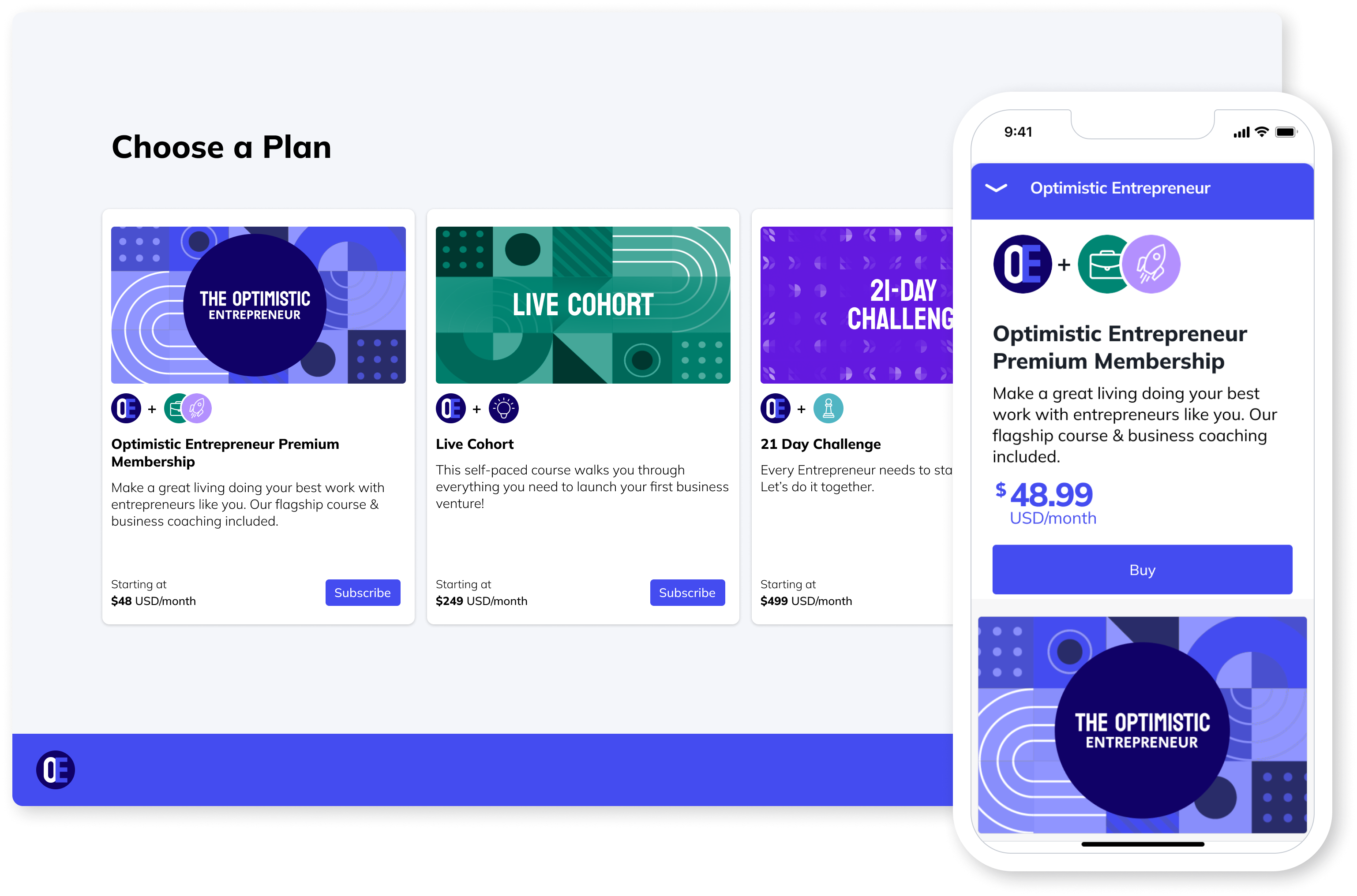
Owning your space
The web pioneer Brian Clark famously said, “Never build on someone else’s land.” He coined the term “digital sharecropping” for what he saw as creators working hard to build on platforms they have no control over.
We’ve seen the fallout from building on platforms you don’t own. Getting locked out of social media channels you’ve spent years creating. Getting hacked and losing everything.
Maybe the answer is to build content in a space you own. For Brian Clark, this meant blogging–and he created the business “Copyblogger” around this.
But in the 2020s, it could mean a newsletter or a private community.
We’re a community platform. So we do love creating content in online communities. In a community of like-minded people, there’s no algorithm to fight with.
Not everyone will choose to build off of social media–since it does come with some advantages too. But it’s worth thinking about the level of control that you want before you start creating content.
5. Collaborate
Some of the best content creators collaborate! Collaboration is a great way to grow. If you can find content creators with overlapping audiences, it can be a mutual boost to work together.
Being a content creator doesn’t have to happen in a vacuum. Working together with other creators can provide a huge benefit and boost your growth.
6. Monetize
Not every content creator needs to or wants to monetize. But with the majority of kids wanting to be YouTubers when they grow up, there’s a good chance many creators will need to.
Monetizing content is a whole subject on its own, and we’ve hinted at it already through this article. You’ll need to find a strategy that works
Let’s be honest, being a content creator should come with the opportunity to monetize. And with the sobering statistics we talked about above, it’s vital to think about this.
46% of full-time creators earn less than $1,000/year.
That’s sad.
The first step is always to create the best content you can, but if you can grow on a space that lets you monetize well, it’s important.
Will you monetize with ads, affiliate, or influencer marketing?
Are you selling a product or service?
Will you build a membership site?
Are you planning to sell a course or virtual events?
And you can use the creators calculator to find out how much you can earn from each platform:
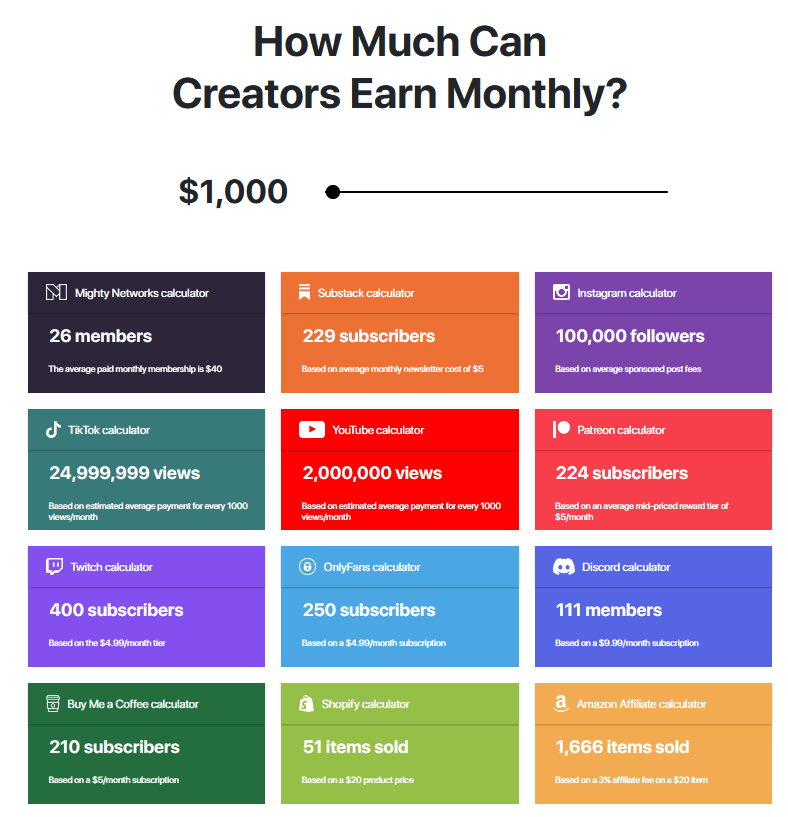
The other part of monetization isn’t as exciting, but important.
Money earned online still counts as income for your local tax jurisdiction. Monetizing from content creation can technically make you a business owner, so make sure you’re charging and tracking finances properly, and that you’re following your local tax laws.
A visit to a local small business center can help you get this covered.
7. Keep getting better
Ask any content creator, and they’ll tell you that their oldest content is the worst. But it’s part of the journey.
Making great content is a valuable skill, that’s why great content creators can earn from it. And like any skill, it can take some time to master.
If you keep improving your content, mastering the art of creation, you’re in a golden spot to turn content creation into your full-time work.

Ready to start?
If you want to create the ultimate content platform–your own community that you can monetize–come build with us! Mighty lets you build your best content, whether it’s written, recorded, or performed, and you can bring together paying members who want to be a part of what you’re creating.
With features like livestreaming, discussion forums, chat & messaging, and scheduled live events, it’s the content platform that gives you more per member. You don’t need millions of followers to earn a living from your content. You just need a community of 50 people who care about what you do and want to be a part of it.
You can try Mighty free for 14 days–no credit card required.
Ready to start building your community?
Start a free 14-day trial to explore Mighty—no credit card required.
More like this
Join Mighty Community
Learn the principles of Community Design™ (and see them in action) alongside thousands of creators and entrepreneurs. It's free to join!

Online Courses
Creating a Course
Teaching a Course
Course Platforms
Selling a Course
Communities & Memberships
Community Platforms
Managing a Community
Building a Community
Growing a Community
Monetizing a Community
Content Creation
Creators & Entrepreneurs
Monetization
Content Creation
Starting a Business
Website Builders
Creating & Managing a Website
Events
Event Platforms
Hosting & Marketing Events
Branded Apps
Creating a Mobile App
Coaching Apps
Community Apps
Coaching
Mastermind Groups
Starting a Coaching Business
Coaching Platforms
Filter by Category
Online Courses
Communities & Memberships
Creators & Entrepreneurs
Events
Branded Apps
Coaching
Build a $1 Million Community
This free masterclass went viral—sign up to learn why.






